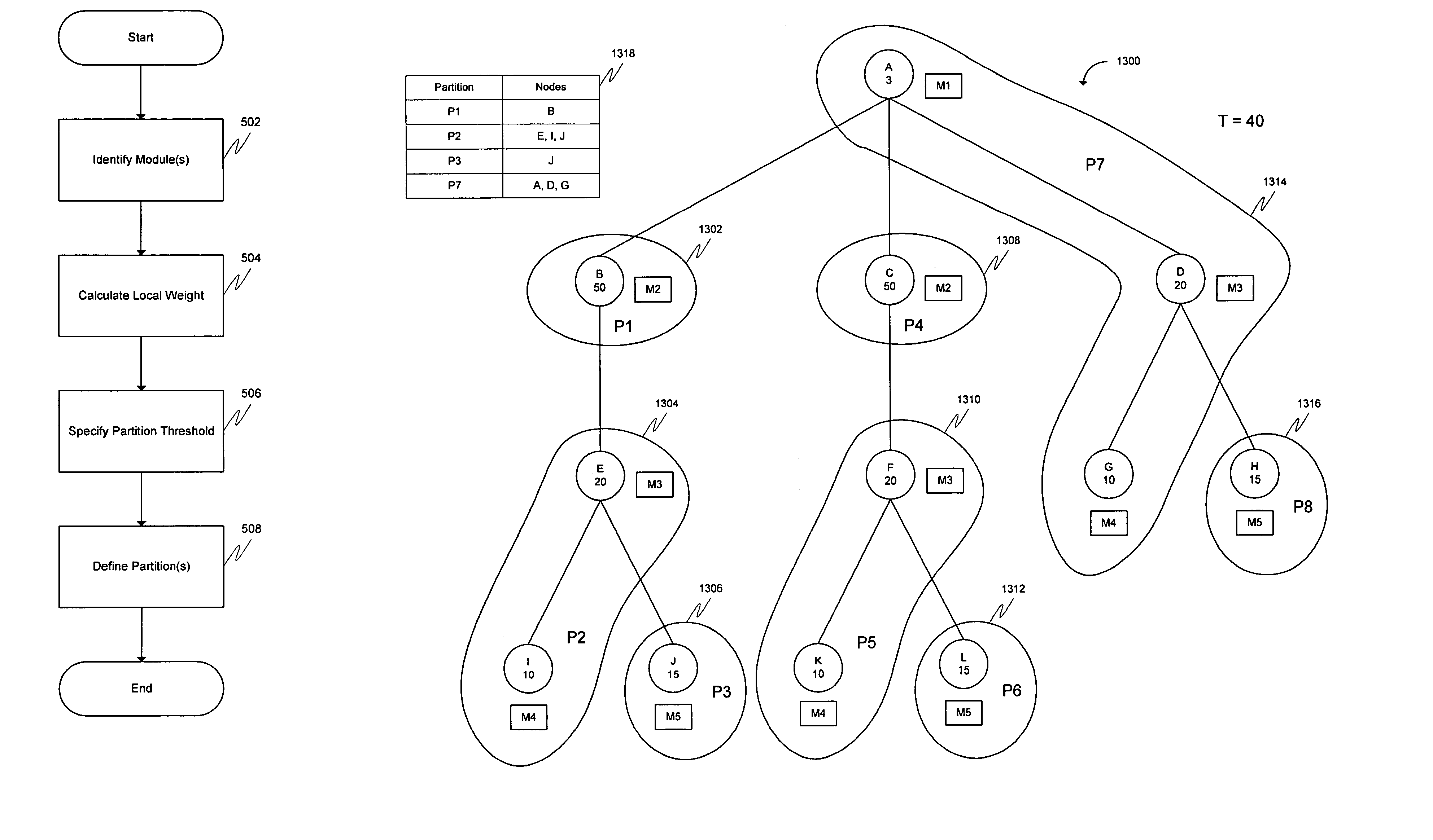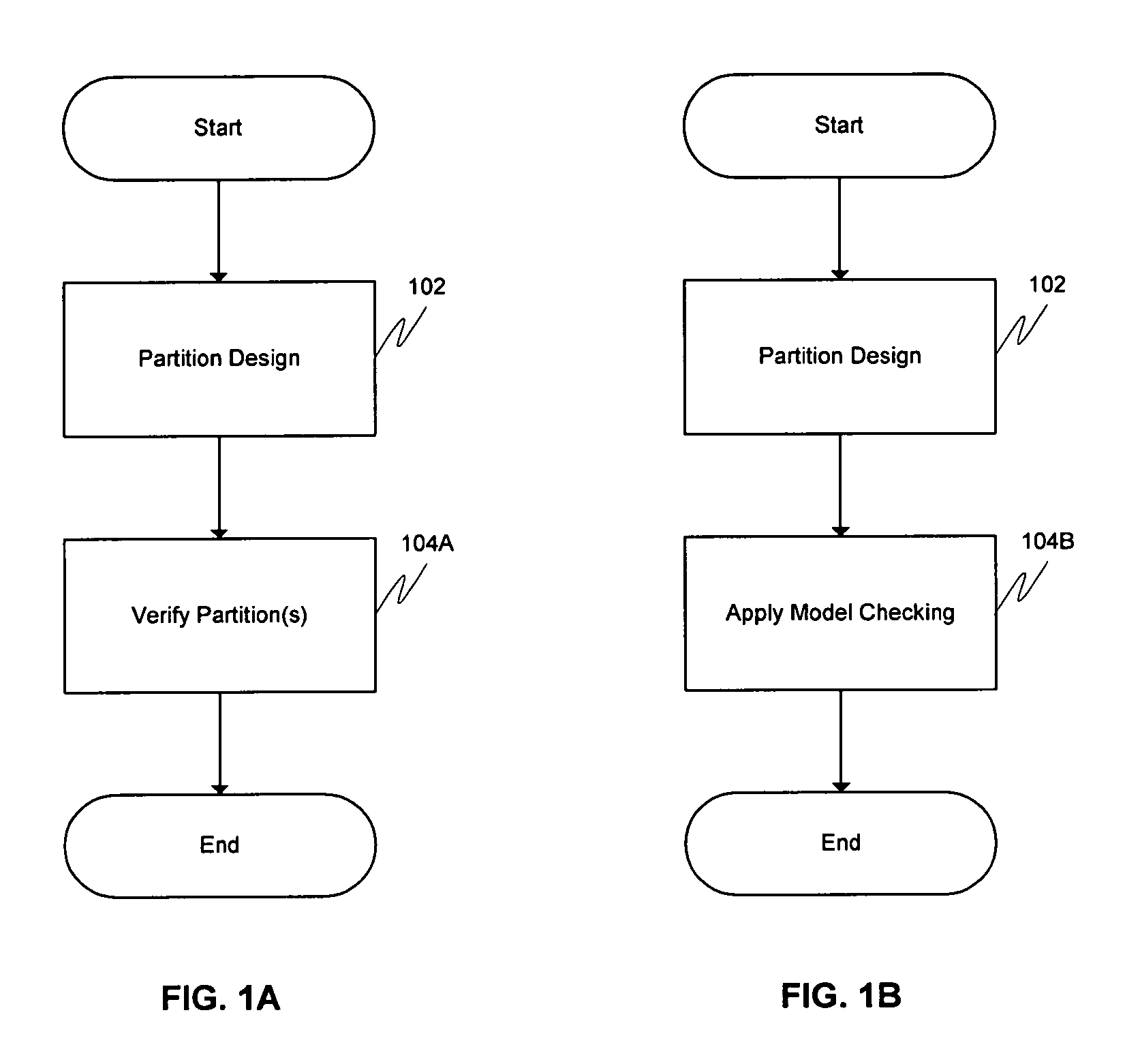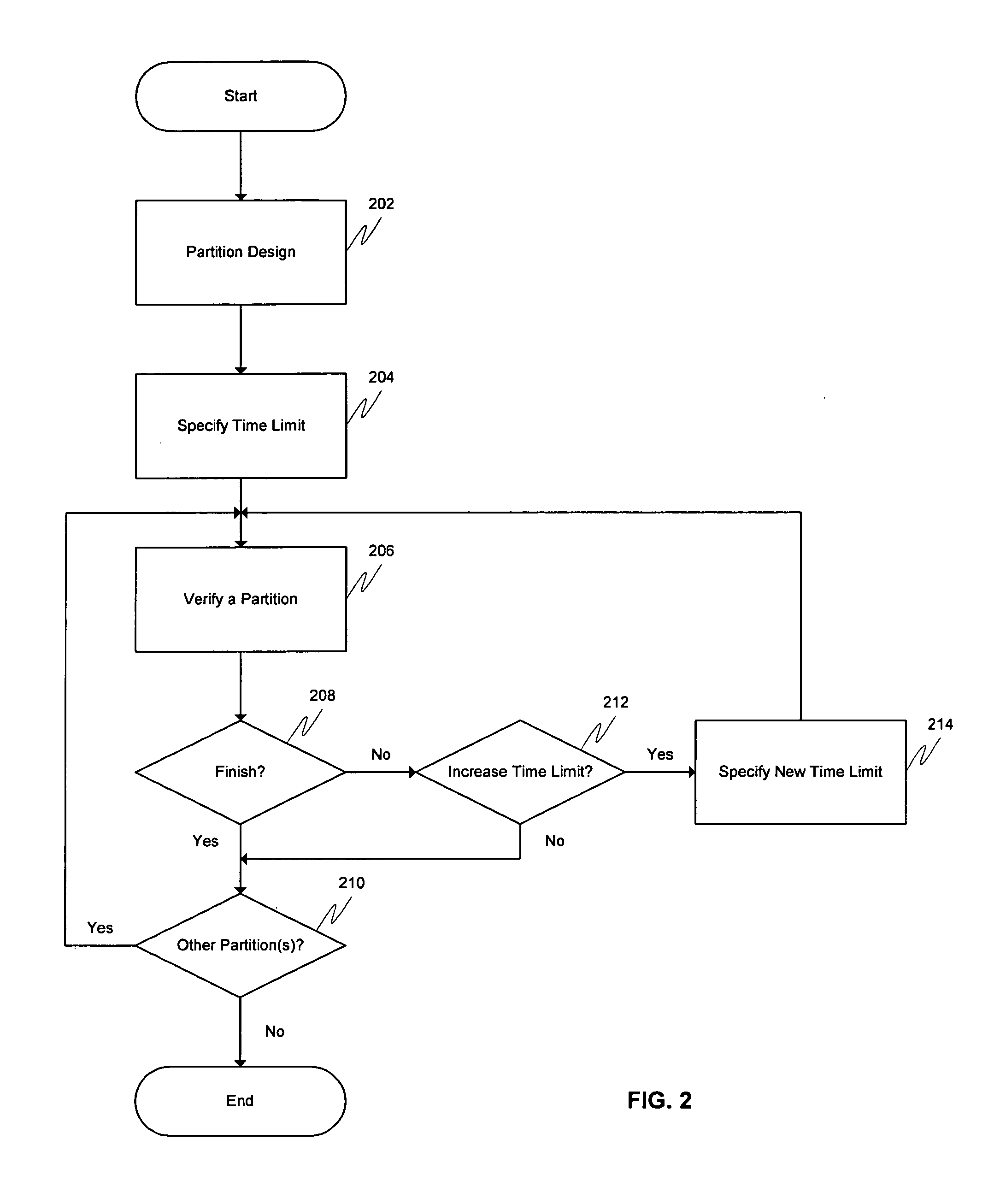Method and system for partitioning an integrated circuit design
a technology of integrated circuits and design, applied in the field of verification of integrated circuit designs, can solve the problems of inability to handle large designs, model checking, and exhaustiveness, unlike simulation, and achieve the effect of avoiding the need for large-scale design verification
- Summary
- Abstract
- Description
- Claims
- Application Information
AI Technical Summary
Benefits of technology
Problems solved by technology
Method used
Image
Examples
example
[0041]For example, if procs .a and .e are of the same proctype, then the partition (root=.a, freelist={.a.b, .a.c.d}) is identical to (root=.e, freelist={.e.b, .e.c.d}).
[0042]
/ / Main algorithm: partition / / Input: / / root, the root of a design hierarchy tree, the nodes of / / which corresponds to module instantiations in the design. / / Each node in the tree is referred to by its relative pathname. / / Interchange: expanded IP file. / / T is the given threshold for the weight of a single partition. / / R is the threshold to decide if root gets packed with each set of children / / assume R / / Output: / / Partitions are represented by the root of the subtree and the freelist / / (list of subtrees to be free in the hierarchy). The weight of the partition / / is also provided. / / Other variables: / / partition-table: all proctypes of nodes that form roots of / / partitions are put into partition-table to avoid inserting / / duplicates in the table.partition(root, T, R) {assert (R partition-table = empty(table); / ...
PUM
 Login to View More
Login to View More Abstract
Description
Claims
Application Information
 Login to View More
Login to View More - R&D
- Intellectual Property
- Life Sciences
- Materials
- Tech Scout
- Unparalleled Data Quality
- Higher Quality Content
- 60% Fewer Hallucinations
Browse by: Latest US Patents, China's latest patents, Technical Efficacy Thesaurus, Application Domain, Technology Topic, Popular Technical Reports.
© 2025 PatSnap. All rights reserved.Legal|Privacy policy|Modern Slavery Act Transparency Statement|Sitemap|About US| Contact US: help@patsnap.com



